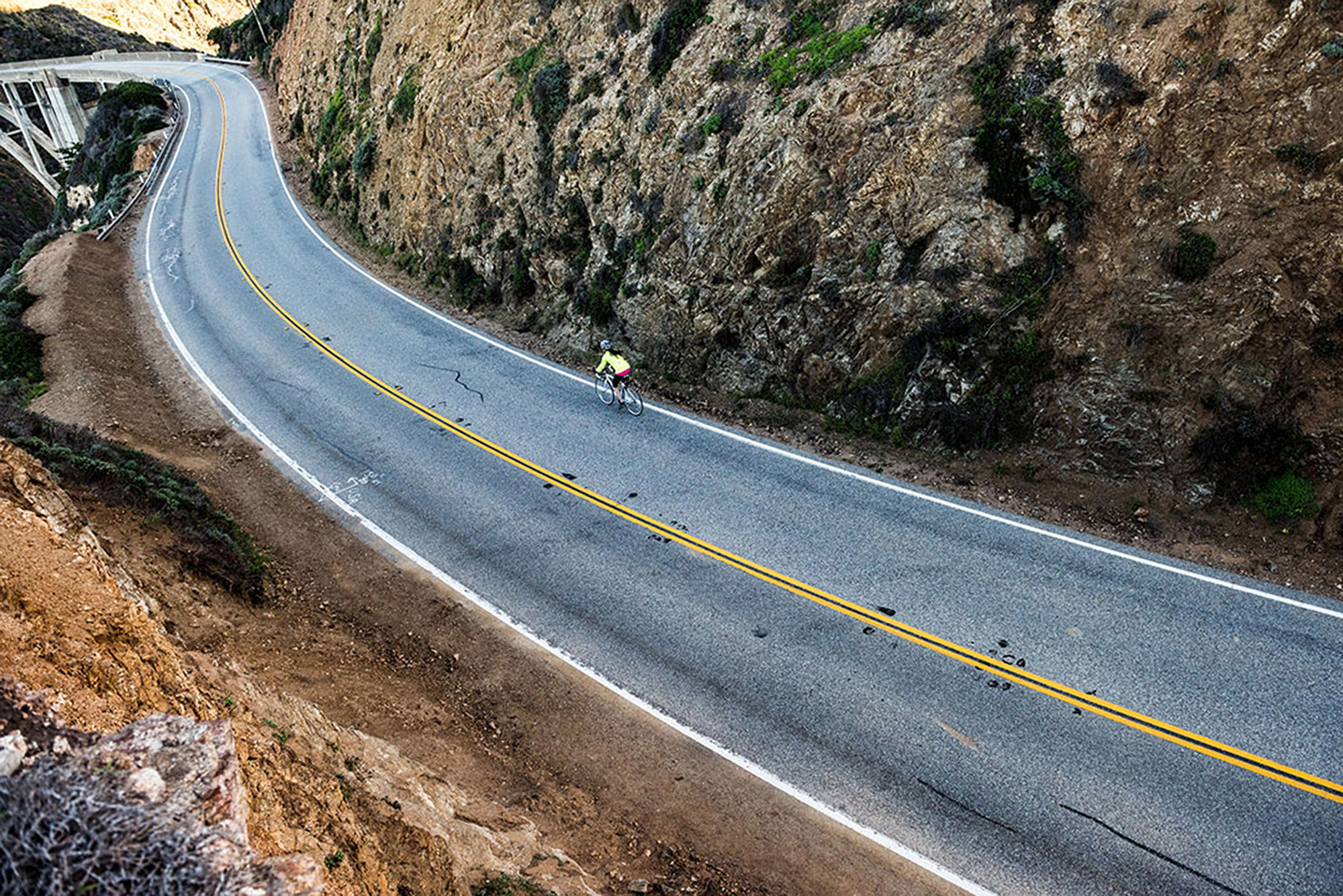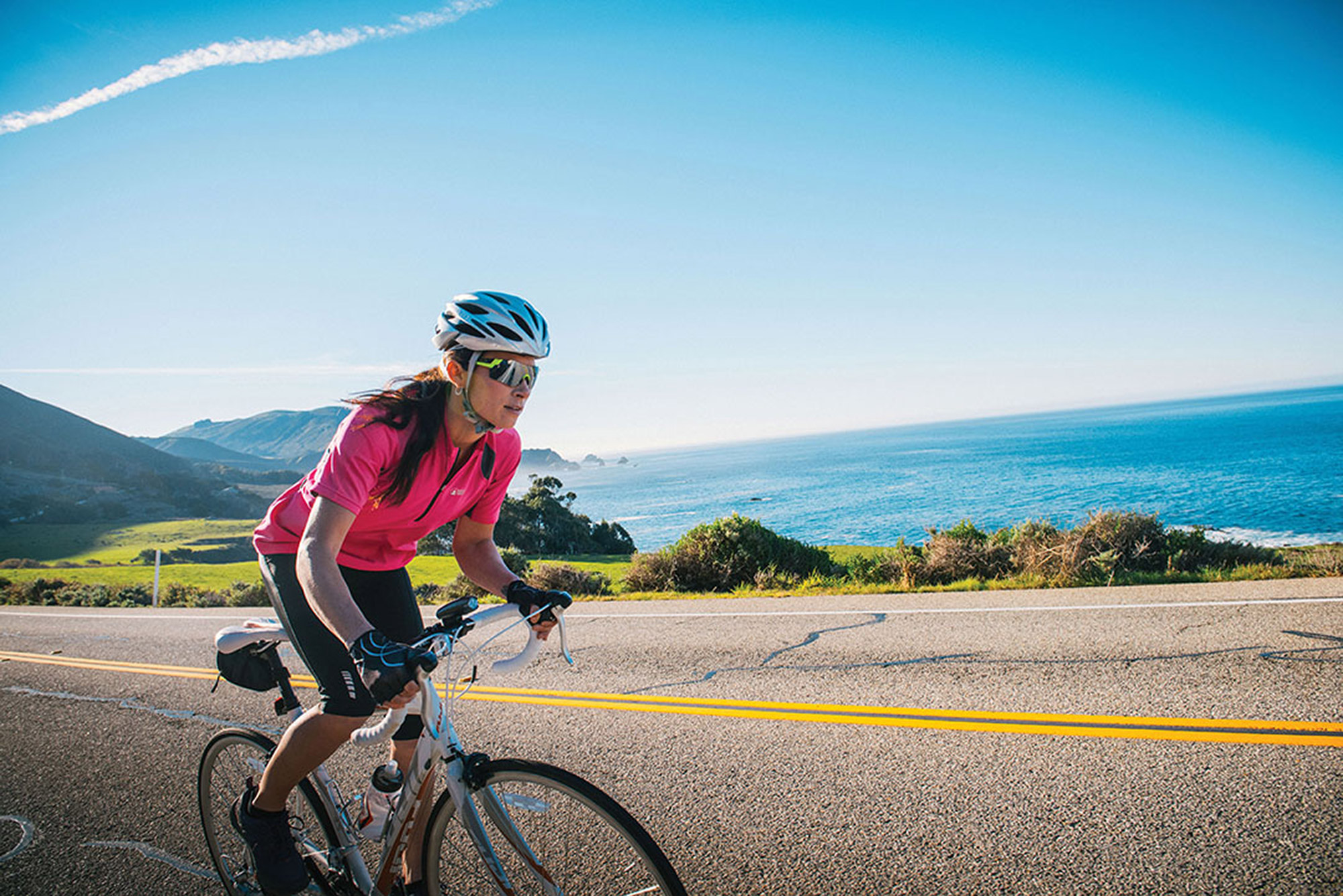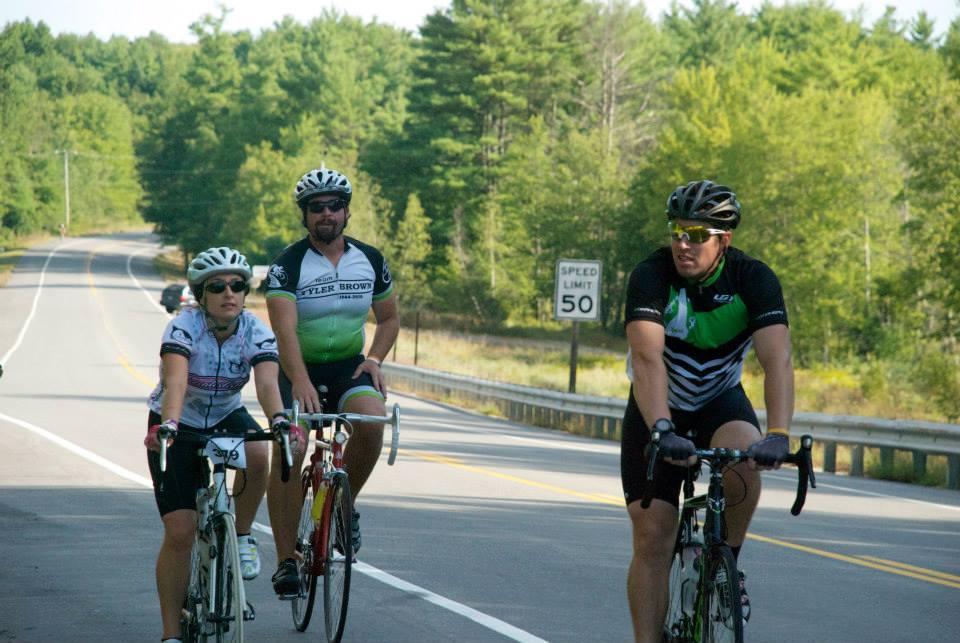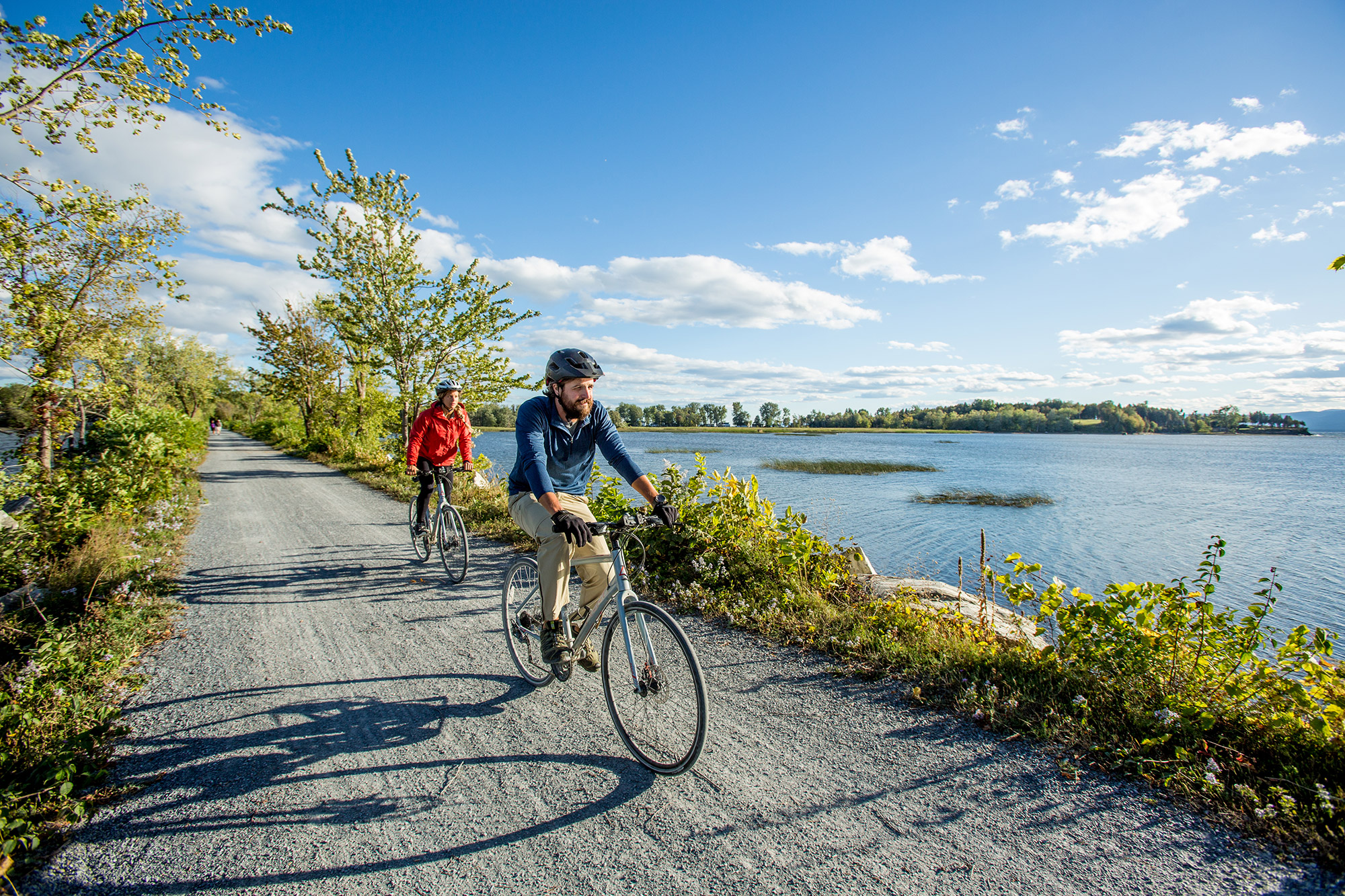Spring has finally sprung, and with it comes one of my favorite times of year: Century Ride Season. If you find yourself gearing up for a big bike ride this spring or summer—whether it’s a “true” century (100 miles), a metric century (100km/62 miles), or one of the shorter distances often offered at big bike events—here are nine tips to make sure your event is a success.

1. Commit to a Training Plan
If you stay reasonably active year-round, you may think you don’t need to follow a training plan because you’re already fit. Personally, I fall into this trap often. You may also be turned off by training plans, because you think following one means you won’t be able to do the other activities you enjoy for eight to 12 weeks.
But, these plans exist for a reason. And, when you have a century ride on your horizon, it’s super important to find one—and stick with it. A quick internet search will turn up tons of potential plans. Look for one that puts you in the saddle for a minimum of three days per week, increases ride mileage and/or duration steadily each week, and leaves room for you to keep up with other physical activities. After all, activities like running and hiking are great for cross-training. And, as you don’t want to sacrifice strength training, either, keep your favorite boot camp or power yoga class on your schedule, too!
2. Hit a Spin Class (or Invest in a Trainer)
A lot of people love spin classes, but I also know many who can’t stand them. On one hand, spin classes help you mix up your routine and work on drills that are really good for you but that you’d never do on a real ride (I’m looking at you, Figure 8s). As well, you still get your workout in when the weather doesn’t cooperate with your plans.
On the other hand, I get it: riding in place can be boring. But, you know what else is sometimes boring? Century rides! Sure, the start and finish lines are always exciting. But, an hour or two into the ride, when the pack has dispersed, spectators are few and far between, and there’s no more music, you’ll need a strong mental game to keep going. Spin classes, and even trainer rides, are the best way to work on your focus.

3. Practice Fixing Flats
Most organized bike rides have a Support and Gear vehicle (often referred to as a SAG Wagon) or two on course at all times and bike techs at all the rest stops. Thus, knowing how to fix flat tires and make minor bike tweaks isn’t completely necessary. But, you should still know how to do it, and on the side of the road mid-century ride isn’t the best time to learn.
Practice fixing flats in your garage, so you can do it efficiently in the event that it happens on century ride day. Additionally, know how to handle chain issues, in case yours starts to give you trouble on the course. And, if you do end up having to perform a fix, be sure to have a tech at the next rest stop give it a once-over to ensure it will make it to the finish without any more problems.
4. Body Glide is Your Friend
Chafing may not be much of an issue when you’re just out on the bike for an hour or two. However, during a century ride, it can become a pretty big pain in the butt pretty quickly. Enter Body Glide, your new best biking friend (BBF). Before you ride, a quick application to high-chafe-risk areas—where the edges of your bike shorts’ chamois rub against your skin and upper inner thighs—prevents a lot of discomfort later on. And, if your feet are prone to blisters, Body Glide also takes care of that problem.

5. Know Your Body
You’re going to be on your bike for a long time on century ride day. Plan for at least four hours, and that’s if you happen to be the fittest rider on the starting line. As such, it’s super important to know your body inside and out. Use your training rides to experiment with fueling options, so you know what foods and drinks your stomach tolerates the best. If you notice that one or both of your knees (or any part of your body) consistently hurt afterwards, take your bike into your local bike shop to make sure it’s properly fitted to you.
Do your hands get super sweaty while you ride? Bring an extra set of bike gloves to avoid palm blisters. More importantly, if you get to the check-in table and don’t feel like you can make it through a 100-mile ride, listen to your body, and ask if you can switch your registration to one of the shorter courses.
6. Know the Course
The influx of GPS-enabled watches and bike computers and apps like Strava means that even if ride organizers don’t provide course maps on their website—which is pretty rare these days—you should still be able to find a map of it somewhere on the internet. It’s good to know what kind of a ride you’re getting yourself into, especially regarding the elevation profile. Find out how hilly the course will be, and try to find training routes that are similar to set yourself up for success. If you live near the century ride route, or at least part of it, get out there, and train on the course itself! The more you know ahead of time, the more strategic you can be, since you’ll know where you can push yourself and when you should reel it in and conserve some energy.

7. Know Your Gear
From the bike to your clothes and shoes to everything packed in your bike bag, there’s a lot of gear involved in 100-mile bike rides. Plan your outfit carefully, being sure to choose the bike shorts and jersey that will keep you the most comfortable for four to seven hours in the saddle. If you use clipless pedals, make sure the tension on them is set just right. Make sure you can click in and take off from the rest stops quickly, and get out of your pedals in a hurry, in case you have to stop unexpectedly.
Pack your bike bag thoughtfully, including a bike multitool, tire levers, spare tube(s), and a pump, in addition to anything else you may need, such as those extra gloves mentioned earlier or a travel stick of Body Glide, in case you need to reapply. Above all else, avoid using anything new—clothes, shoes, or pedals—on event day. Stick to the things you know and have been using during training to ensure a successful century ride.
8. Take Your Bike for a Check-Up
This one should be a no-brainer, but it’s one that a lot of people—myself included—often skip. Bring your bike into your local shop for a quick check or tune-up a week or two beforehand to make sure it’s as ready for the big day as you are. After all, while it’s great to have the tools (and necessary knowledge) to fix minor issues yourself, as well as access to rest stop bike techs, not worrying about having a mid-ride breakdown is even better.
9. Have fun!
Everything discussed above is important, or else, I wouldn’t have brought it up. But, perhaps the most important tip is to enjoy the experience. Most century rides are charity events, not races, so there’s no need to push the pace all day. Relax, make new friends, stop to take pictures, eat all the PB&Js you want at the aid stations, and just enjoy the ride—literally.
Did I miss something? If you have more tips for aspiring (or returning) century riders, let us know in the comments!

Ashley Peck
Ashley Peck spends her days perpetually over-caffeinated and trying VERY HARD to not buy every single book that passes through her hands while working at the local indie bookstore. At night, she lurks in the shadows at the rock gym, waiting for the right moment to spite-send your project (as long as it's no harder than V5). In her free time, she likes to hike, ride bikes, think about running, ski, snuggle her dogs, read the books that she's definitely not buying and sneaking into her house every day, and eat entirely too much cottage cheese.
Related Posts
April 2, 2024
10 Tips for Mountain Biking Etiquette During Mud Season
One rough spring could ruin the…




